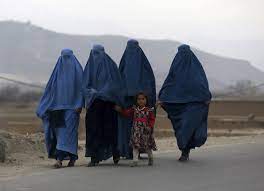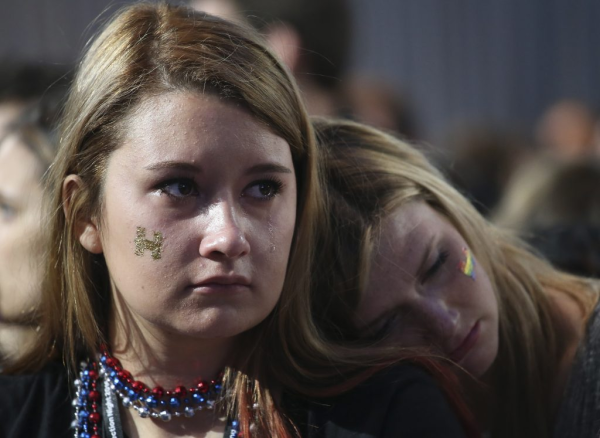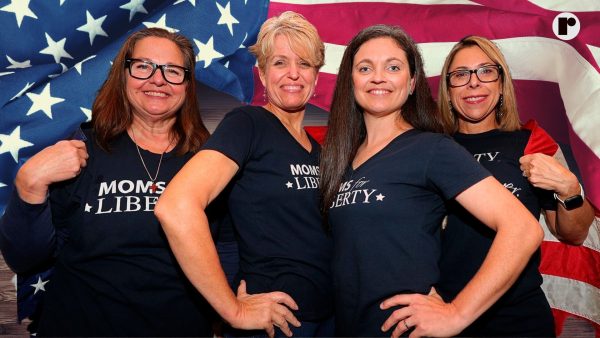A civil rights issue looms for Afghan women

Since the recent transfer, or rather overtake, of power in Afghanistan, immense escalation of violence has called for even more humanitarian assistance for the citizens, especially women and children of Afghanistan.
Now that evacuations from Kabul’s airport have ended, and the last troops have gone, the focus shifts to the overwhelming and long term human rights crisis in Afghanistan. The concern for many is what the country will be like after this shift in power, how this will affect the last 20 years of gains for women and girls, and what influence the international community will have.
Henrietta Fore, UNICEF’s executive director, told CNBC that the impact on children’s and women’s rights and education is the agency’s “deepest concern” following the withdrawal of US and foreign allied soldiers from Afghanistan.
Fore also explained in her interview with CNBC that unaccompanied children and young women as well as the continuation of immunization programs for preventable diseases are two other major concerns in Afghanistan. “We are very worried about the status of women and children … We need the women as teachers, as healthcare workers, in children’s hospitals as doctors; we need the women to be able to work in the society. We are, as yet, unclear in some areas if that’s going to be allowed,” she said.
In the last twenty years women in Afghanistan have gained more rights in regards to employment, representation and education. Women’s rights were enshrined in Afghanistan’s 2004 constitution where the new legislature allowed women to hold a certain percentage of seats in Parliament and enter sectors like law, government, and media.
During this time, International aid severely limited the Taliban’s rule and therefore improved some social, economic, and health outcomes for women. A member of the Taliban, Sayed Zekrullah Hashimis recent statement in an interview shows that women’s rights may be in more danger than we realized. The interviewer asked Hashimi what was the fault of women which prevented them from becoming ministers, he responded saying, “You tell me what the benefit of having a women minister? Why select women when men can do the job.” He also went on to say that women should also be restricted to giving birth and educating children on Islamic ethics.
Now that girls and women have access to education, the instability and Taliban resurgence in recent years and especially now, has threatened that. In 2020, of the 9.5 million students, just shy of 40 percent were girls, according to USAID. The Taliban’s actions have already limited women’s education rights as just recently university classes in Afghanistan have been separated by gender and women now have a strict dress code.
Caroline Dymond, a teacher at Naugatuck High School and Advisor of the school’s feminist club said in a recent interview, “We have seen formerly liberated women back in burquas in less than a month, and I find this disgusting. RBG told us that women belong in all places where decisions are being made. This basic right is being stripped from 50% of the Afghani population. It is unconscionable. Women’s education, representation, safety and basic humanness is at risk, and that is terrifying!”
Also, according to Shabia Mantoo, a spokesperson for the United Nations Refugee Agency, 80 percent of the almost 250,000 individuals forced to escape their homes in Afghanistan since the end of May have been women and children. A United Nations study released last month also stated, the number of women and children killed and injured drastically grew in May and June, at the same time as the United States and other international troops began withdrawing their remaining soldiers from Afghanistan.
The Taliban’s actions throughout the last twenty years of the country’s struggle can be overall declared as reprehensible and even an evil act. The Taliban is notorious internationally for its misogyny and violence against women. Taliban forces have already resorted to extreme violence during a women’s protest following their takeover. Their stated motive since their formation has been to create a “secure environment where the chasteness and dignity of women may once again be sacrosanct,” according to an article from George W. Bush Presidential Center.
Since the recent violence towards women of Afghanistan, many institutions as well as organizations have called for justice for those killed, and protection for those still alive and fighting for their lives.
Women for Women International, a “nonprofit humanitarian organization that provides support to female survivors of war”, are collecting donations to help women find safe places to meet and ways to stay connected. “We’re closely monitoring the situation unfolding in Afghanistan. Our team is safe. They are very sad, but calm, and sheltering in place,” the organization said. “Whatever happens in the coming days, we hold true to the idea that women can and should help shape the future of Afghanistan. Our international community of supporters matters now more than ever.”

I am a senior and I want to become a Physician's Assistant. I am taking Journalism because I like writing about current news and interviewing others to...







